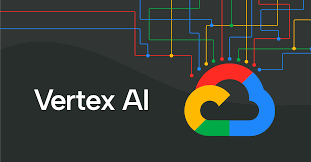Exploring Google Vertex AI Conversation — Dialogflow CX with Generative AI, Data Stores, and Generators
Vertex AI Conversation, built on Dialogflow and Vertex AI, introduces generative conversational features that utilize large language models (LLMs) for natural language understanding, crafting responses, and managing conversation flow. These advancements streamline agent design and enhance the quality of interactions.
With Vertex AI Conversation, you can employ a state machine approach to develop sophisticated, generative AI-powered agents for dynamic conversation design and automation.
In this insight, we’ll delve into the cutting-edge Dialogflow CX Generative AI technology, focusing on Data Stores and Generators.
Data Stores: The Library of Information for Conversations
Imagine Data Stores as an extensive library. When a question is asked, the virtual assistant acts as a librarian, locating relevant information. Dialogflow CX’s Data Store feature makes it easy to create conversations around stored information from various sources:
- Website domain: Google can index your website after verifying ownership.
- Unstructured data: Store data from private organizational documents (HTML, PDF, TXT) and, in preview, formats like PPTX and DOCX.
- Structured data (Preview): Integrate BigQuery or Cloud Storage data.
For data preparation guidance, visit Google’s official documentation.
Generators: LLM-Enhanced Dynamic Responses
Dialogflow CX also enables Generators to use an LLM directly in Dialogflow CX without webhooks. Generators can perform tasks like summarization, parameter extraction, and data manipulation. Sourced from Vertex AI, they create real-time responses based on your prompts.
For example, a Generator can be customized to summarize lengthy answers—an invaluable feature for simplifying conversations in chat or voice applications. You can find common Generator configurations in Google Cloud Platform (GCP) documentation.
Creating a Chat Application with Vertex AI
To start building, go to the Search and Conversation page in Google Cloud, agree to the terms, activate the API, and select “Chat.”
Setting Up Your Agent
After naming your agent and configuring data sources, like a Cloud Storage bucket with PDF documents, you’ll see your new chat app under Search & Conversation | Apps.
Navigate to Dialogflow CX, where you can use your data store by setting up parameters for the agent and configuring responses. Once your agent is ready, you can test it in the Agent simulator.
Adding a Generator for Summarization
Using the Generator feature, you can further refine responses. Set parameters to target the Generator’s summarization feature, and link it to a specific page for summarized responses. This improves chat flow, providing concise answers for faster interactions.
Integrating with Discord
If you want to deploy your agent on platforms like Discord, follow Google’s integration guide for Dialogflow and adjust your code as needed. With the integration, responses will include hyperlinks for easy reference.
Conclusion
Vertex AI Conversation, with Dialogflow CX, enables powerful, human-like chat experiences by combining LLMs, Data Stores, and Generators. Ready to build your own dynamic conversational experiences? Now is the perfect time to experiment with this technology and see where it can take you.










